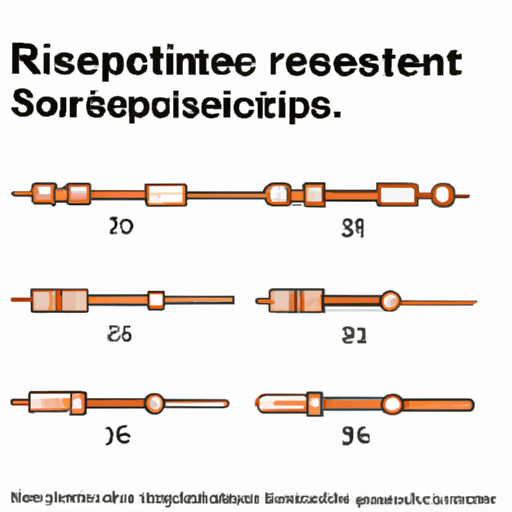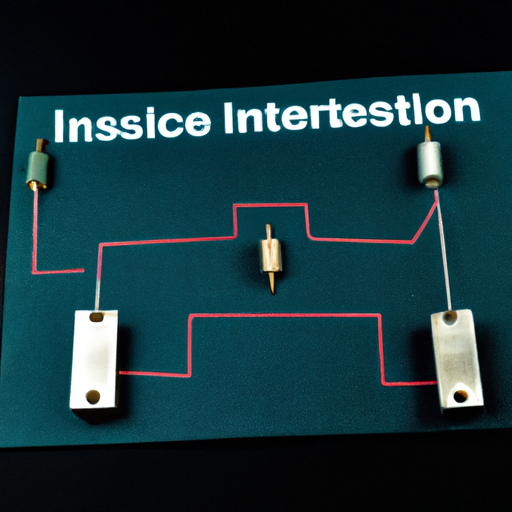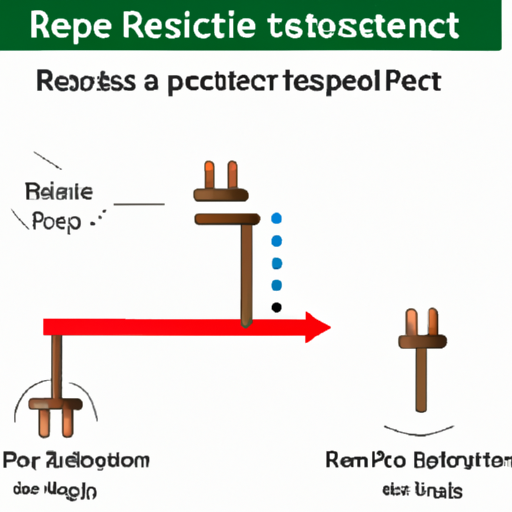What are the product standards for resistor 4?
What are the Product Standards for Resistor 4?
I. Introduction
In the world of electronics, resistors play a crucial role in controlling the flow of electric current. Among the various types of resistors, Resistor 4 stands out due to its specific applications and requirements. Understanding the product standards for Resistor 4 is essential for manufacturers, engineers, and designers to ensure quality, reliability, and safety in electronic devices. This blog post will delve into the significance of product standards, the specifications of Resistor 4, and the various testing and compliance measures that are essential in the electronics industry.
II. Understanding Resistors
A. Basic Principles of Resistors
Resistors are passive electronic components that limit the flow of electric current in a circuit. They are fundamental to the operation of electronic devices, serving various functions such as voltage division, current limiting, and signal attenuation. Resistors can be categorized into two main types: fixed and variable. Fixed resistors have a predetermined resistance value, while variable resistors, such as potentiometers, allow for adjustable resistance.
B. Key Specifications of Resistors
When discussing resistors, several key specifications must be considered:
1. **Resistance Value**: Measured in ohms (Ω), this value indicates how much the resistor opposes the flow of current.
2. **Tolerance**: This specification defines the acceptable range of deviation from the nominal resistance value, usually expressed as a percentage.
3. **Power Rating**: Measured in watts (W), this indicates the maximum power the resistor can dissipate without overheating.
4. **Temperature Coefficient**: This specification describes how the resistance value changes with temperature, which is crucial for maintaining performance in varying environmental conditions.
III. Overview of Product Standards
A. Definition and Purpose of Product Standards
Product standards are established guidelines that define the quality, safety, and performance criteria for various products, including electronic components like resistors. These standards ensure that products meet specific requirements, thereby promoting consistency and reliability across the industry.
B. Importance of Compliance with Standards in the Electronics Industry
Compliance with product standards is vital for manufacturers and engineers. It not only ensures the safety and reliability of electronic components but also facilitates international trade by providing a common framework for quality assurance. Non-compliance can lead to product failures, safety hazards, and legal repercussions.
C. Common Organizations that Set Standards
Several organizations are responsible for establishing product standards in the electronics industry, including:
International Electrotechnical Commission (IEC)
Institute of Electrical and Electronics Engineers (IEEE)
American National Standards Institute (ANSI)
These organizations develop and publish standards that guide manufacturers in producing high-quality electronic components.
IV. Specific Standards for Resistor 4
A. International Electrotechnical Commission (IEC) Standards
The IEC has developed a series of standards specifically for resistors, known as the IEC 60115 series. These standards outline the testing methods, performance requirements, and quality assurance processes for resistors, including Resistor 4. Key specifications relevant to Resistor 4 include:
Temperature Coefficient: Ensures that the resistor maintains its performance across a range of temperatures.
Power Rating: Specifies the maximum power the resistor can handle without failure.
B. American National Standards Institute (ANSI) Standards
The ANSI also provides standards applicable to resistors, particularly through its collaboration with IEEE. These standards focus on the electrical performance and safety of resistors, ensuring that Resistor 4 meets the necessary requirements for various applications.
C. Other Relevant Standards
In addition to IEC and ANSI standards, Resistor 4 must also comply with environmental regulations such as:
RoHS Compliance: Restricts the use of hazardous substances in electronic products.
REACH Regulations: Addresses the production and use of chemical substances and their potential impacts on human health and the environment.
ISO Standards: Provide guidelines for quality management systems, ensuring that manufacturers maintain high standards throughout the production process.
V. Testing and Quality Assurance
A. Importance of Testing in Ensuring Compliance with Standards
Testing is a critical component of the quality assurance process for resistors. It verifies that the components meet the established product standards and perform reliably in their intended applications.
B. Common Testing Methods for Resistors
Several testing methods are commonly employed to assess the performance of resistors, including:
1. **Resistance Measurement**: This test determines the actual resistance value of the resistor, ensuring it falls within the specified tolerance range.
2. **Power Rating Tests**: These tests evaluate the resistor's ability to handle its rated power without overheating or failing.
3. **Environmental Testing**: This involves subjecting the resistor to various environmental conditions, such as temperature and humidity, to assess its performance and reliability.
C. Quality Assurance Processes in Manufacturing
Manufacturers must implement robust quality assurance processes to ensure compliance with product standards. This includes regular testing, documentation of results, and adherence to established manufacturing practices. Continuous improvement initiatives can also help manufacturers enhance their processes and product quality.
VI. Applications of Resistor 4
A. Common Applications in Electronic Devices
Resistor 4 is widely used in various electronic devices, including consumer electronics, automotive systems, and industrial equipment. Its specific characteristics make it suitable for applications that require precise control of current and voltage.
B. Importance of Adhering to Standards in Various Applications
Adhering to product standards is crucial in ensuring the reliability and safety of electronic devices. Non-compliance can lead to product failures, which can have significant consequences, especially in critical applications such as medical devices and automotive systems.
C. Case Studies of Resistor 4 in Real-World Applications
Several case studies highlight the importance of Resistor 4 in real-world applications. For instance, in automotive electronics, Resistor 4 is used in control systems to manage power distribution and ensure the safe operation of various components. In consumer electronics, it plays a vital role in signal processing and voltage regulation.
VII. Challenges and Considerations
A. Challenges in Meeting Product Standards
Manufacturers often face challenges in meeting product standards, including the need for advanced testing equipment, skilled personnel, and adherence to evolving regulations. Additionally, the increasing complexity of electronic devices can make compliance more difficult.
B. Impact of Non-Compliance on Performance and Safety
Non-compliance with product standards can lead to significant performance issues and safety hazards. For example, a resistor that fails to meet its power rating may overheat, leading to circuit failure or even fire hazards.
C. Future Trends in Resistor Standards and Technology
As technology continues to evolve, so too will the standards governing resistors. Future trends may include stricter environmental regulations, advancements in materials science, and the development of smart resistors that can adapt to changing conditions in real-time.
VIII. Conclusion
In conclusion, understanding the product standards for Resistor 4 is essential for ensuring the quality and reliability of electronic components. Compliance with established standards not only promotes safety and performance but also facilitates international trade and innovation in the electronics industry. Manufacturers and engineers must prioritize adherence to these standards to maintain the integrity of their products and the trust of their customers.
IX. References
1. International Electrotechnical Commission (IEC) Standards
2. American National Standards Institute (ANSI) Publications
3. RoHS and REACH Regulations
4. ISO Quality Management Standards
5. Academic and industry publications on resistors and product standards
By prioritizing compliance with product standards, the electronics industry can continue to thrive, delivering innovative and reliable solutions to meet the demands of an ever-evolving technological landscape.






